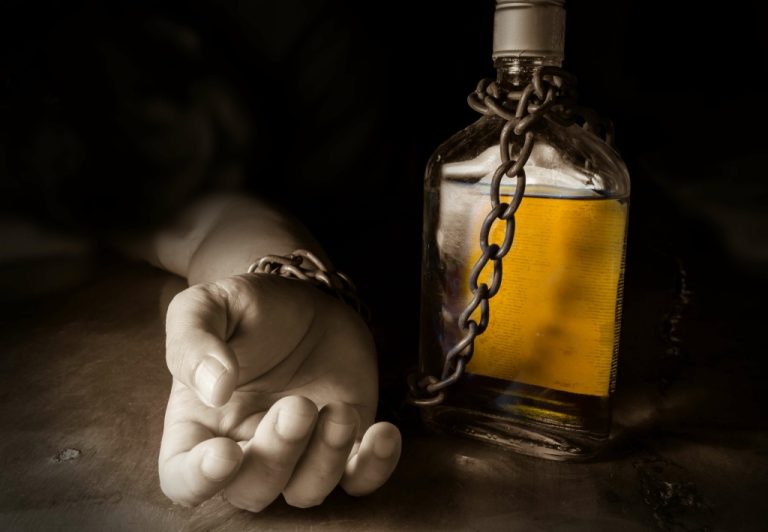Robaxin is legal in the U.S. by prescription, with a lower risk for dependency than other muscle relaxants. Crystal meth addiction is the compulsive use of methamphetamine, a synthetic stimulant known for producing extreme euphoria and energy. This addiction is classified as a substance addiction as it directly alters neurotransmitter levels and leads to rapid dependency.
- Reoccurrence of use may happen to people who use drugs and can happen even years after not taking the substance.
- Misuse refers to the misuse of a substance at high doses or in inappropriate situations that could lead to health and social problems.
- Telehealth is a delivery method for IOP and Outpatient treatment that takes place through online therapy sessions and consultations with healthcare providers.
- An overdose happens when the person uses enough of a drug to produce uncomfortable feelings, life-threatening symptoms, or death.
- When addictive substances enter the system, they disrupt the brain’s neurotransmitter networks, which are essential for neural communication.
- Taking some drugs can be particularly risky, especially if you take high doses or combine them with other drugs or alcohol.
Can Drug Addiction Affect Mental Health?

The most common types of drug addiction include substances like opioids (oxycodone, hydrocodone, and heroin), cocaine, methamphetamine, cannabis (marijuana), alcohol, and benzodiazepines (such as Valium and Xanax). These drugs are prevalent due to their availability, potency, and the euphoric effects they induce, making them highly addictive and, in some cases, expensive. The causes of drug addiction are broadly classified into biological factors, environmental and psychological factors. This includes genetic predisposition, family history, peer influence, mental health condition, social influences, early exposure to substances, and trauma. The range of care for addiction treatment encompasses a variety of interventions and support options tailored to meet the diverse needs of individuals struggling with substance use disorders. Each stage of treatment plays an important role in addressing the physical, psychological, and social aspects of addiction.
Drug Addiction: Definition, Type, Causes, Symptoms, Effects, Treatment and Recovery
Drug addiction, clinically recognized as substance use disorder, is a chronic, relapsing brain condition that compels an individual to seek and use drugs despite adverse consequences. This disorder is characterized by significant alterations in the brain’s structure and function, which lead to compulsive behaviors, impaired judgment, and prioritization of drug use. Extensive research, including findings from the National Institute on Drug Abuse (NIDA) in their March 2022 report “Drugs and the Brain,” explains how addiction manipulates the brain’s reward system.
Dependence, Addiction, & Mental Health

In some cases, urine or blood tests are conducted to detect the presence of drugs in the system, helping to confirm the diagnosis and what is drug addiction tailor the treatment approach. PTSD and drug addiction overlap through the use of substances as a coping mechanism for managing the intense emotional pain and distress caused by traumatic experiences. This overlap is seen especially in veterans with PTSD who turn to drugs or alcohol to self-medicate and alleviate symptoms such as anxiety, nightmares, or flashbacks. Treatment options for Marijuana addiction include therapy (CBT, motivational interviewing), support groups, medication (for co-occurring disorders), and relapse prevention strategies.
- There are 260 drugs classified as Schedule I. Some examples of Schedule I drugs include ecstasy, heroin, synthetic heroin, LSD, marijuana, and peyote.
- Remember, it’s common for people to develop a tolerance to pain medication and need higher doses to get the same level of pain relief.
- It leads to anxiety, depression, and paranoia, as substances disrupt the brain’s natural chemical balance, impacting mood regulation and cognitive functions.
- While men are more at risk for developing a chemical dependency like alcoholism, women seem to be more vulnerable to becoming addicted to alcohol at much lower amounts of alcohol consumption compared to men.
- Long-term cannabis use leads to significant health issues, including respiratory problems from smoking, altered brain development in younger users, and cognitive impairments affecting memory and attention.
Is Addiction a Disease or a Choice?

Therefore, they prioritize the substance or action over everything else to feel good. If they go without, they will experience withdrawal symptoms, which can be painful. Long-term use can result in a dangerous cycle of addiction in which people need to continue using substances or engaging in behaviors to avoid the uncomfortable symptoms of withdrawal.
A lack or disruption in a person’s social support system can lead to substance or behavioral addiction. Traumatic experiences that affect coping abilities can also lead to addictive behaviors. For instance, stimulants like cocaine increase dopamine levels quickly, which significantly affects the brain’s reward system, https://nh0.264.myftpupload.com/2023/08/solved-question-6-1-points-save-answer-people-with/ reinforcing drug use as a pleasurable habit.
The frontal lobe allows a person to delay feelings of reward or gratification. An addiction is a chronic dysfunction of the brain system that involves reward, motivation, and memory. It’s about the way your body craves a substance or behavior, especially if it causes a compulsive or obsessive pursuit of “reward” and lack of concern over consequences. Opioid use disorder (OUD) is defined as a problematic pattern of opioid use that causes significant impairment or distress. Dr. Wakim is a board-certified psychiatrist with a passion for and expertise in addiction, mood disorders, trauma-related disorders and the subspecialty of interventional psychiatry.
Drugs are addictive because they manipulate the brain’s reward system, releasing large amounts of dopamine, a neurotransmitter linked to pleasure and reinforcement. This dopamine surge creates a strong association between the drug and the pleasurable experience, driving individuals to repeatedly seek out the drug to achieve the same effect. Over time, this alters the brain’s natural dopamine production, making it difficult to experience pleasure from everyday activities and leading to a cycle of compulsive drug use despite negative consequences, a core feature of addiction.
Health Care Providers
The brain adapts to continued drug use by developing a tolerance, which means it takes more of a drug to feel the same result. Addiction is broadly categorized into physical (substance) addiction and behavioral (process) addiction. The Most Common Benzodiazepine Addictions include Alprazolam (Xanax), Diazepam (Valium), Lorazepam (Ativan), and Clonazepam (Klonopin). These widely prescribed medications are followed by Chlordiazepoxide (Librium), Temazepam (Restoril), and Oxazepam (Serax) in terms of addiction frequency. Nicotine addiction is the compulsive use of tobacco products despite the harmful health consequences. Hallucinogens are a class of drugs known for causing profound alterations in sensory and perceptual experiences, often enhancing or distorting a person’s view of reality.
It is particularly detrimental to the cardiovascular and respiratory systems, leading to diseases such as alcohol rehab chronic obstructive pulmonary disease (COPD) and heart disease. According to the World Health Organization (WHO, 2021), tobacco use causes more than 8 million deaths per year worldwide, including both smokers and non-smokers exposed to second-hand smoke. Cigarette smoking alone kills more than 480,000 Americans each year, according to the U.S. Department of Health and Human Services Office on Smoking and Health 2014 research.
More recently, the concept of addiction has expanded to include behaviors, such as gambling, as well as substances, and even ordinary and necessary activities, such as exercise and eating. Because addiction can affect so many aspects of a person’s life, treatment should address the needs of the whole person to be successful. Counselors may select from a menu of services that meet the specific medical, mental, social, occupational, family, and legal needs of their patients to help in their recovery. Since 2011, the public understanding and acceptance of addiction as a chronic brain disease and the possibility of remission and recovery have increased.

